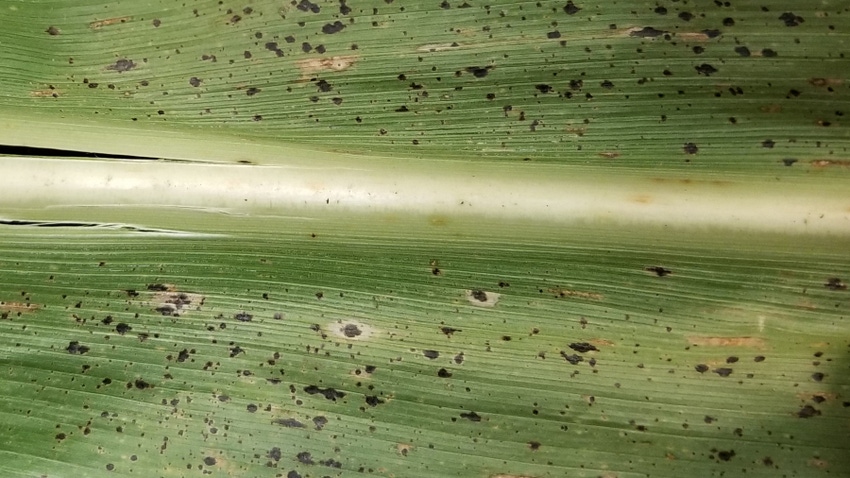
What bothers you most about tar spot? What would you ask a panel of specialists in tar spot management if you had the chance?
Three panelists from Corteva Agriscience gave growers that opportunity during a recent webinar about the disease. The panel included Scott Heuchelin, a plant pathologist with Pioneer; Scott Rountree, a Pioneer technical agronomist in south-central Wisconsin; and Will Tubbs, a technical researcher with Corteva in central Iowa.
Is watching tar spot once you know it is there and waiting to spray a sound strategy?
Rountree: Where is the disease in the corn canopy? We definitely want to protect the ear leaf and higher leaves. Are halos forming around black spots on leaves? If so, the disease is showing signs of developing to the next level.
Heuchelin: What is the weather forecast for the next week to 10 days? Will conditions be favorable for tar spot, with long periods of wetness and average daily temperatures in the 63 to 72 degree F range?
Does residue management help with tar spot control?
Rountree: Some early infection each year likely comes from inoculum which was in the field already. Tillage would likely help with that. But it is such a small amount compared to all the inoculum from spores that are windblown. I would certainly not compromise soil erosion control, especially in areas with rolling soils, just to get a small amount of help from not having that residue around.
Why do some hybrids not have scores for tolerance for tar spot?
Heuchelin: Speaking for the Pioneer lineup of hybrids, if a product has not been exposed to what we feel are sufficient levels of tar spot pressure in testing, we are not going to rate it. We want to be confident if we recommend something to a grower. There is a difference between knowing how a hybrid will react to disease pressure in the field vs. in the lab. We would much rather leave a hybrid unrated until we are confident in what it can do than risk a grower getting a surprise.
Can you predict what disease ratings should be based on genetics?
Heuchelin: We can predict what inbreds will do in the face of disease. And we can get a good idea of how a hybrid should react from how its inbred parents react. However, we would rather be conservative. We don’t want to rate a hybrid until we are confident of what it will do under high pressure because we have seen what it will do.
How do I sort through the process of deciding when to spray what fungicides?
Tubbs: There is no silver bullet. There is no one fungicide or timing of application or stage of corn growth that will be the best solution each time.
Instead, ask yourself questions related to your operation and find solutions that fit your operation best.
Is there a stage when it is too late to apply fungicide?
Tubbs: Yes, there is a cutoff. There will be a point late in the season if the corn is nearly done when it won’t be economical to apply fungicide. Those are judgment calls.
Read more about:
Tar SpotAbout the Author(s)
You May Also Like




